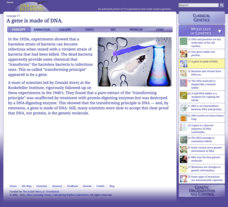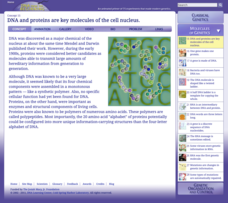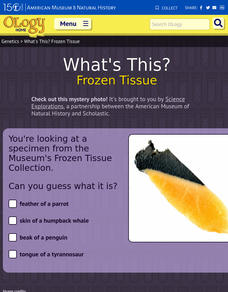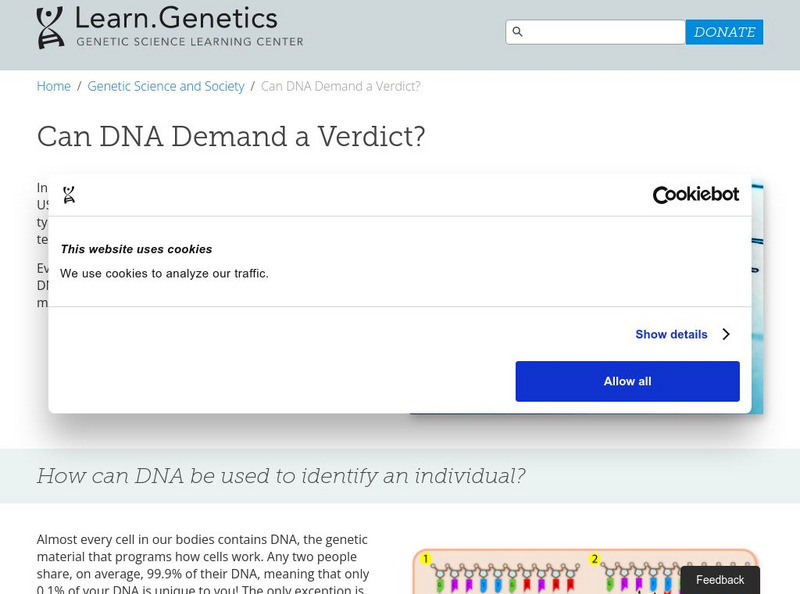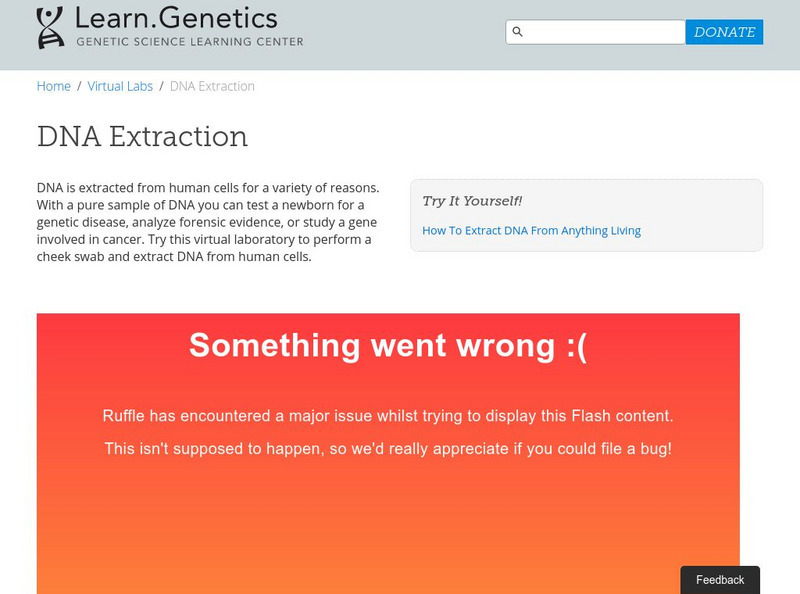American Museum of Natural History
DNA Detective
DNA is like the fingerprint of genetics. A quick lesson introduces the topic of DNA sequences with a mystery about an endangered species. The lesson shows how DNA extraction, replication, and sequencing often provide undeniable evidence...
Cold Spring Harbor Laboratory
A Gene Is Made of DNA
Does a protein or DNA store genetic instructions for life? Follow the research from the 1920's experiments on mice through the 1940's experiments on bacteria to learn the answer to the difficult question. Scholars use an online...
Cold Spring Harbor Laboratory
DNA and Proteins Are Key Molecules of the Cell Nucleus
When DNA research first began, it required almost an entire day to extract the molecules from a cell nucleus. Now it requires less than an hour. Scholars learn about the early theories of DNA with an online interactive, videos,...
Cold Spring Harbor Laboratory
Some DNA Does Not Encode Protein
Roy John Britten easily earned a PhD in nuclear physics—but he found painting with water colors too difficult. Young scientists learn about Britten's life, career, and research with an online interactive. They read a biography, view...
American Museum of Natural History
What's This? Frozen Tissue
Take a peek into thousands of frozen samples. Learners try to identify an image of a piece of frozen tissue. After choosing the correct answer, scholars find out more information about the American Museum of Natural History's Frozen...
Cold Spring Harbor Laboratory
Higher Cells Incorporate an Ancient Chromosome
Chromosomes contain keys to history including links from royalty to Neanderthals. Young scientists learn about Ivan Wallin's research into chromosomes with an animation and videos. Then, the concept connects to mysteries related to...
University of Utah
University of Utah: Genetic Science Learning Center: Dna and Verdicts
Part of a site on genetics, this page explores DNA as a forensic science. Explains how and why DNA can be used to convict or acquit a criminal from wrongdoing using forensic DNA analysis. Teacher resources too.
University of Utah
University of Utah: Learn Genetics: How to Extract Dna From Anything Living
Four steps is all it takes to get DNA out of a variety of living things. The requirements include a blender, meat tenderizer, isopropyl alcohol, and a test tube. Sources of DNA include but are not limited to split peas, strawberries,...
Other popular searches
- Strawberry Dna Extraction
- Dna Extraction Cheek Cells
- Dna Extraction From Onion
- Dna Extraction Lab
- Dna Extraction From Saliva
- Dna Extraction of Fruit
- Dna Extraction of Strawberry
- Dna Extraction Yeast
- Dna Extraction Peas
- Dna Extraction Lab Protocol
- Dna Extraction From Oinion
- Dna Extraction +Pea

